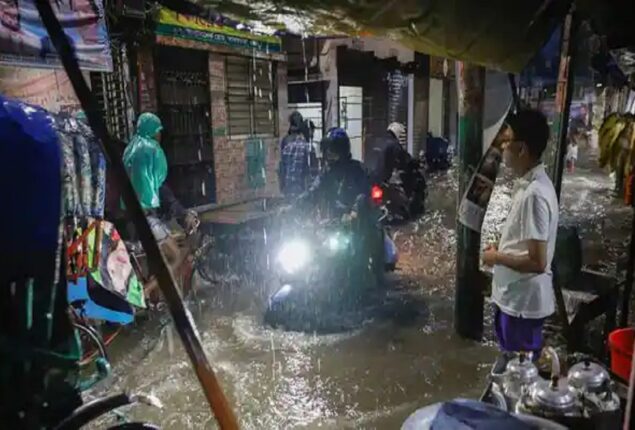Cyclone Ian makes second landfall in South Carolina
Hurricane Ian is hitting South Carolina, which is its second US landfall...

Nine people killed in Bangladesh by Cyclone Sitrang
According to officials, at least nine people have perished when Cyclone Sitrang crashed into Bangladesh’s southern shore, cutting off communications and power, and damaging homes.
Nine people have perished, the most as a result of trees falling, including three members of one family in Cumilla’s eastern region, according to Jebun Nahar, a government official, who spoke to AFP.
The cyclone, which is equal to an Atlantic hurricane or a west Pacific typhoon, made landfall in southern Bangladesh late on Monday, although authorities were able to evacuate roughly a million people in advance of the massive weather system.
Early on Monday, the cyclone slammed into the Bay of Bengal with winds of 88 km/h (55 mph) and a storm surge of nearly 3 m (10 ft), flooding low-lying coastal towns.
According to officials, coastal regions have been largely cut off from power and telephone services and are now completely dark.
After communications were restored in his neighborhood, Mizanur Rahman, a resident of Bhola district, told Reuters, “It was horrific, it appeared like the sea was coming to get us.”
“We had a restless night and could only pray.”
According to Kamrul Ahsan, secretary of the Disaster Management Ministry, people who were evacuated from low-lying areas such as remote islands and riverbanks were placed in hundreds of multi-story cyclone shelters.
He stated, “They stayed the night in cyclone shelters.
Inundated cities included the capital, Dhaka, Khulna, and Barisal, which on Monday received 324 millimeters (13 inches) of rain due to the country’s widespread heavy rains.
Tanvir Chowdhury of Al Jazeera stated the tidal surge from the cyclone inundated coastal villages and destroyed crops and fisheries while reporting from Barisal in southwest Bangladesh.
He spoke from Barisal, which is around 30 kilometers (18 miles) from the shore in the south. “The administration was effectively able to evacuate nearly 700,000 people on Monday evening to the cyclone shelters,” he added.
“The southwest belt, including the city of Barisal, is without electricity. This occurs at a time when the area is experiencing a power crisis, according to Chowdhury.
The Al Jazeera correspondent stated that “the internet and communication networks are down,” adding that it will take some time to determine the the extent of the damage.
Over a million ethnic Rohingya refugees from neighboring Myanmar are housed in cramped shelters in southeast Bangladesh’s refugee camps, although no significant damage has been reported there.
Officials ordered the 33,000 Rohingya refugees from Myanmar to stay inside and stated there were no reports of any injuries or property damage. The refugees had been controversially transferred from the mainland to a storm-prone island in the Bay of Bengal.
Officials reported that hundreds of residents in the neighboring state of West Bengal in eastern India were evacuated on Monday to more than 100 relief facilities, but there were no reports of property damage, and people began to return home on Tuesday.
More than 100 people were killed in Bangladesh and India by Storm Amphan, the second “super cyclone” to ever be recorded over the Bay of Bengal. Millions of people were also affected.
Better forecasting and more efficient evacuation preparation have significantly decreased the number of fatalities from such storms in recent years. The deadliest reported event occurred in 1970 and killed thousands of people.
In recent years, South Asia has suffered an increase in harsh weather that has resulted in significant damage. Cyclones are common, but environmentalists claim that climate change is making them more intense and frequent.
Farah Kabir, the ActionAid organization’s national director for Bangladesh, claimed that in 2022, climate catastrophes like floods and droughts occurred “on a magnitude that has never been observed before.”
“Here in Bangladesh, we experience the fury of the climate issue as it grows,” he remarked.
“Communities are left in ruins when major weather events like Cyclone Sitrang strike. We urgently want access to funding for communities struggling to cope with the effects of the climate crisis.
According to a 2015 World Bank Institute report, Bangladesh’s population of 3.5 million was at risk of river floods annually.
Catch all the World News, Breaking News Event and Latest News Updates on The BOL News
Download The BOL News App to get the Daily News Update & Follow us on Google News.